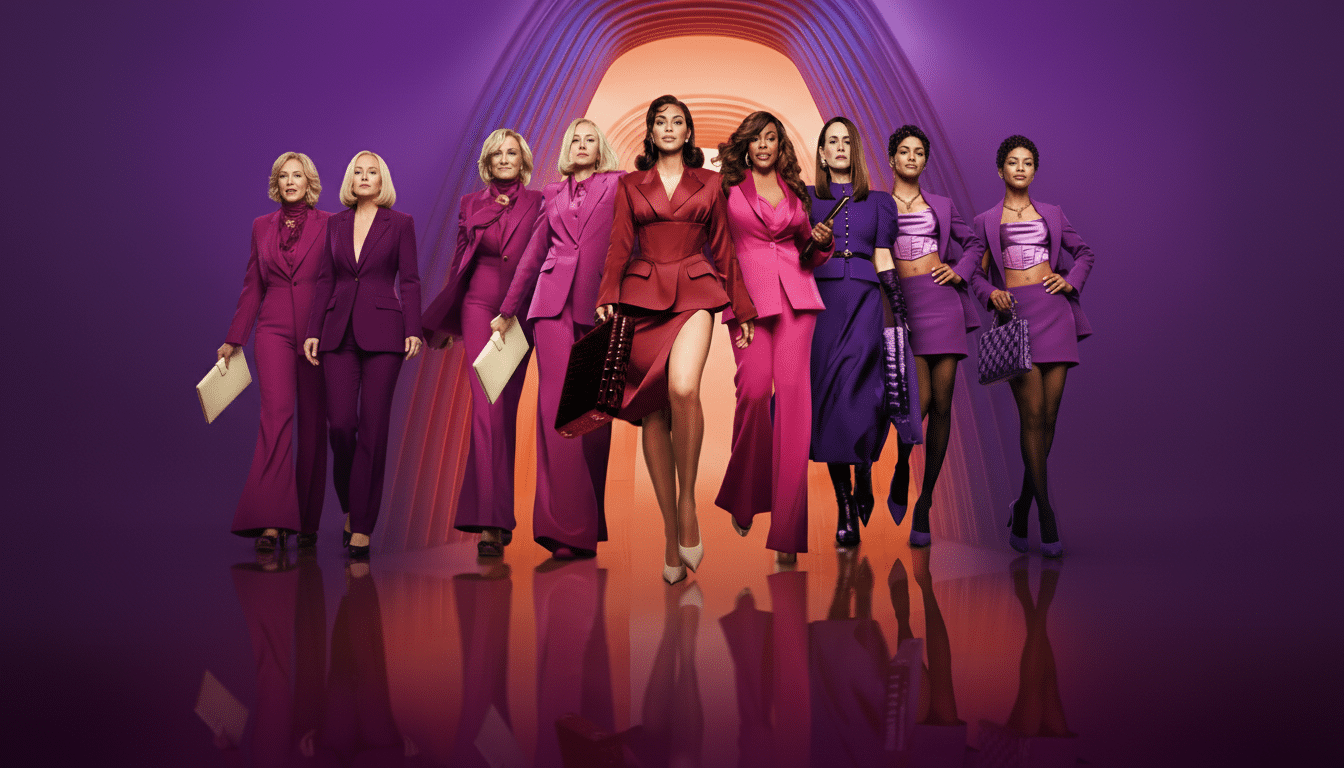Ryan Murphy’s much-hyped legal melodrama All’s Fair arrived to a critical pile-on, but an alternative story is thriving online. Early reviews collected on Rotten Tomatoes placed the show at 0 percent from a small sample size of nine critics, but TikTok edits, X threads, and Reddit watch-alongs are putting a bright spin on gleefully campy fare best served in clips. The disconnect is severe — and instructive as to how TV is being evaluated in 2025.
Critics Call It a Misfire, Citing Dissonant Tone and Pace
Formal reviews have been punishing, with multiple outlets throwing the series aside as ungainly and thematically dissonant. Given the high-profile names on the call sheet — it’s led by Kim Kardashian and includes Glenn Close, Naomi Watts, Niecy Nash, Sarah Paulson, and Teyana Taylor — that response is more surprising. Early reviews are yet to arrive, but there is an early consensus that the dialogue jockeys in vain for zingers; it shoots wide, and the campy touches lack the effortless snap that lent pace to Murphy highs such as American Horror Story’s mid-2010s seasons or Scream Queens.

Just to muddy the waters further, TV press didn’t get advance screeners, a decision that usually results in shortened review windows and edgier first takes. That strategy can front-load the negative, if a show’s rhythm makes itself known later than episode one.
Viewers Are Clipping and Cheering Across Social Media
Elsewhere online, the reaction is more favorable. Users are sharing punchy courtroom barbs and audacious reaction shots, declaring it a “messy good time” and reveling in its spectacle. This is textbook meme economy: a situation whose beats can seem too broad when taking place in living rooms but read as pitch-perfect 12-second entertainment when put through the filter of a vertical feed.
The show skyrocketed her unique likability with an index of desirability, then married that to her current total in the clout ledger. That combination of curiosity about her new first leading scripted role and Murphy’s gift for glossy excess is a recipe for ready-made virality. We’ve seen this playbook in action before: titles like “Emily in Paris” and “Cats,” for example, were bludgeoned with recriminations while thriving as clippable, shareable artifacts. The Idol, too, was savaged by critics, but discussion about it was loud and widespread because viewers couldn’t look away from the freak show.
Scores and the Split-Screen Era of Television
Rotten Tomatoes’ 0 percent figure is attention-getting, but it is also an exceptionally small sample. That number usually bounces a little as more critics weigh in and the season progresses. More fundamentally, audience sentiment can run on a parallel track. Rotten Tomatoes and Metacritic often show double-digit divides between critics and viewers for divisive TV, particularly when the proposition is vibe, not verisimilitude.

This is the time of the split screen, and it favors shows that can operate as content engines. All’s Fair seems engineered for precisely this: high-wattage cameos, couture-heavy frames, and quotables that are tweezed to be screencapped. That doesn’t make up for lumpy plotting, but it does help explain why the internet is having a better time than the reviewers are.
Camp as Strategy, Not Accident, in All’s Fair
Camp feeds on excess, specificity, and the earnest expression of the ridiculous. When it works, the intention is palpable beneath the glitter. When it doesn’t, you get try-hard. Murphy’s work has always straddled that line, and All’s Fair doubles down with couture courtroom theater and “did-they-just-say-that” burns. Even when the writing is trying a bit hard, star chemistry and production design provide plenty for fans to hang onto — and remix into posts that rocket well beyond Hulu’s app.
There’s another structural reason: 45-minute episodes serve up a dozen micro-moments that are like standalone sketches. That’s a feature, not a bug, in an algorithmic landscape. But a viral scene can backfill interest among viewers who never intended to press play.
What Comes Next for All’s Fair as Episodes Roll Out
Hulu released the first three episodes, followed by weekly installments, a schedule that maintains conversation and grants the show repeated opportunities to reset its narrative. If coming episodes do something to sharpen the tone — or just to provide bigger spectacle — that critical mood might soften around the edges, though with a growing fanbase getting louder.
The bottom line: All’s Fair won’t convince skeptics on craft, but it’s winning already on culture. In a marketplace in which attention is currency, the internet’s delight in the most unhinged parts of the show could mean more than a day-one 0% — especially if those moments continue spilling onto timelines every Tuesday.

